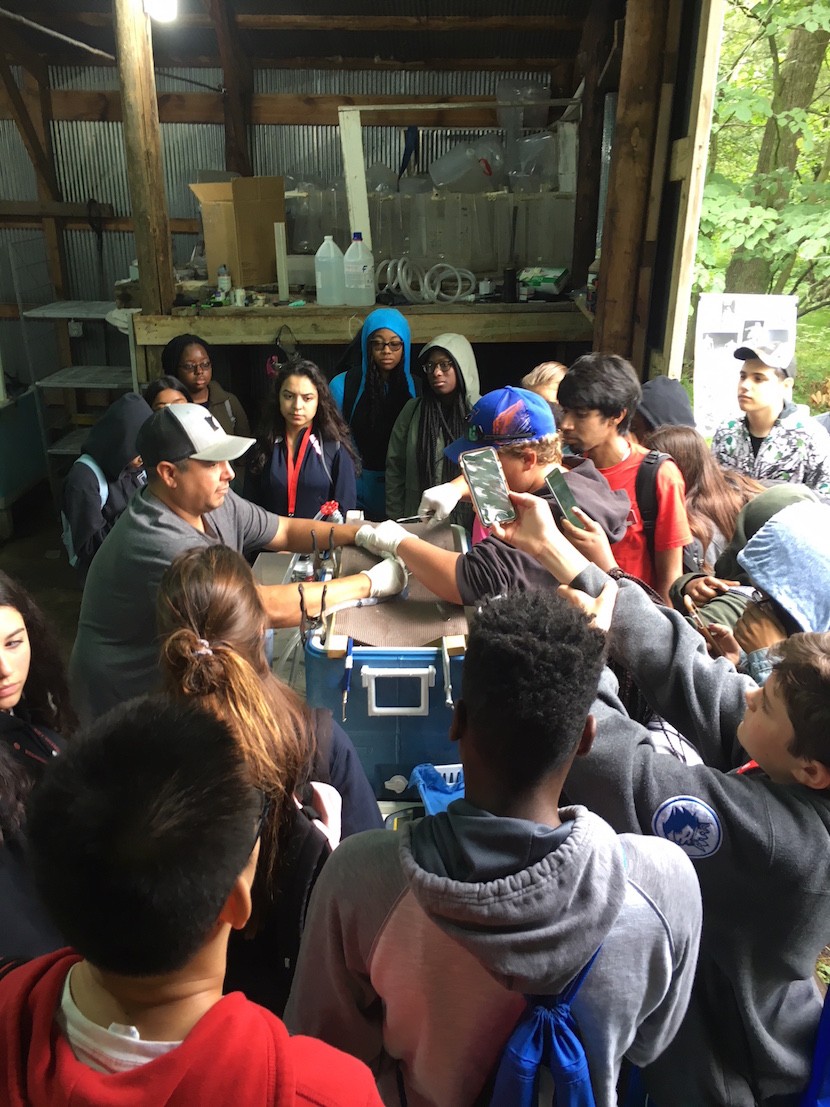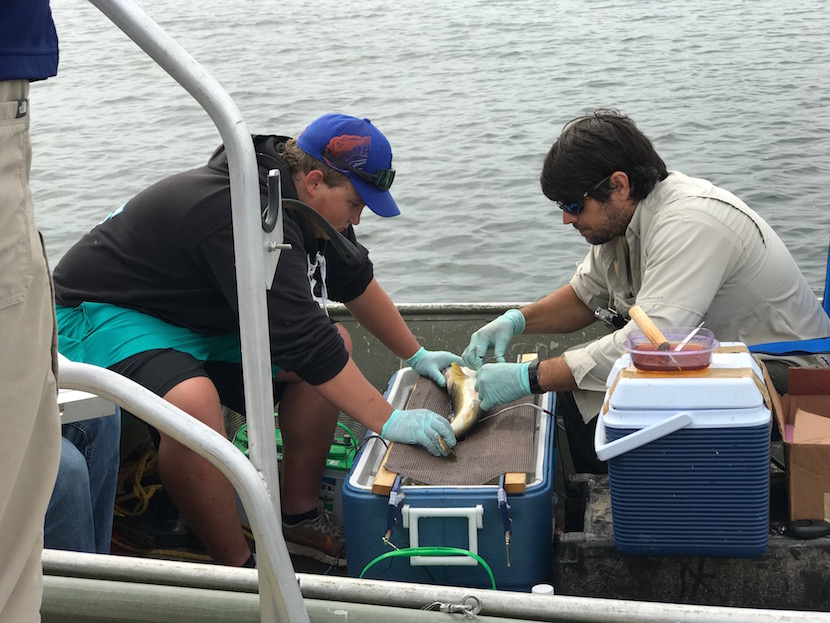
While many factors likely impeding the success of Lake Mille Lacs walleye are known, such as increasing water clarity and temperature and the rise of aquatic invasive species like spiny water flea and zebra mussels, there are yet-unknown factors that may increase the mortality of juvenile walleye between their first and second winters.
Using sophisticated underwater listening equipment and fish-implanted tags, the Mille Lacs Band Department of Nat- ural Resources is about to launch a first-of-its-kind telemetry study on Mille Lacs Lake to gain valuable data they hope will unlock the mystery of why so many of the lake’s young walleye are dying.
Testing a hypothesis
According to Carl Klimah, fisheries biologist for the Band's DNR, walleye are cold-water fish that like a water tempera- ture of around 68 degrees Fahrenheit for optimal growth and survival.
“As water temperature increases, the optimal thermal habitat becomes more constrained, forcing more walleye into a smaller area,” Klimah said. “One hypothesis we will test with this study is whether the environmental conditions of the lake are bringing adult and juvenile walleye into closer proximity, potentially leading to higher predation of juvenile walleye by adult walleye.”
To test the hypothesis, Mille Lacs Band DNR is conducting the telemetry study in partnership with the Great Lakes Indian Fish and Wildlife Commission (GLIFWC). The study is made possible by a $199,075 grant to the Mille Lacs Band from the U.S. Fish and Wildlife Service. GLIFWC, the Fond du Lac Band of Ojibwe, and USFWS are collaborators on the grant.
Telemetry study
A telemetry study uses fixed location receivers in the lake to listen for signals from tags implanted in fish. To conduct this study, the Band will install 61 receivers in a grid pattern spaced approximately 3,000 meters apart throughout the lake. Based on previous, published research experience, the study team expects the Mille Lacs Lake receivers to register a tagged fish approximately every 30 minutes.
The study will include 70 juvenile walleye from 8–10 inches and 70 adult walleye from 18–26 inches long. Researchers will capture these fish, implant transmitter tags in their bellies, observe them to make sure they are healthy, and return them to the lake for study. The adult fish will be tagged and released into Mille Lacs Lake in July. This fall, 35 juvenile walleye will be tagged and released, and another 35 juveniles will be tagged next spring.
Receivers will immediately begin to log data whenever tagged fish are within range. The tags will transmit a unique identifier for each fish, as well as data about water temperature and water pressure to help biologists track the depth of the fish and their movements around the lake.
“As biologists, we develop a lot of scientific hypotheses about what is happening in the lake, but it is really exciting to deploy this type of technology to gather rich data about walleye movement and behavior in Mille Lacs to ultimately uncover meaningful insights,” said Dr. Aaron Shultz, inland fisheries climate change biologist for GLIFWC. “We hope that this data can inform future management and conservation plans for Mille Lacs Lake.”
This telemetry study is planned to through next spring. Juvenile walleye will be tracked for one year due to limited bat- tery life of the tags used on smaller fish. The adult tags may last for 3 or more years, providing ongoing opportunity to learn from the activity of the fish. If future telemetry tagging studies are conducted in subsequent years, the data will continue to build a more complete picture of fish movement over time.
“I think it’s important for people to understand that the mystery of juvenile walleye mortality is solvable. First, we will figure out what is happening, and then we will figure out what can be done about it,” Klimah said.
Researchers from the Mille Lacs Band and GLIFWC will compile data into a findings report at the conclusion of the study period.
The Mille Lacs Band hopes to continue to use this technology after conclusion of the grant study. The Band also may explore collaborations with other managing agencies.
**Above: George Big Bear of the Mille Lacs Band Fisheries Department showed kids how the tracking devices are inserted.
Below: Dr. Aaron Schultz (right) and intern Brandon Johnson of GLIFWC inserted tracking devices in walleyes as part of the Mille Lacs Band's groundbreaking new study on Mille Lacs.**
